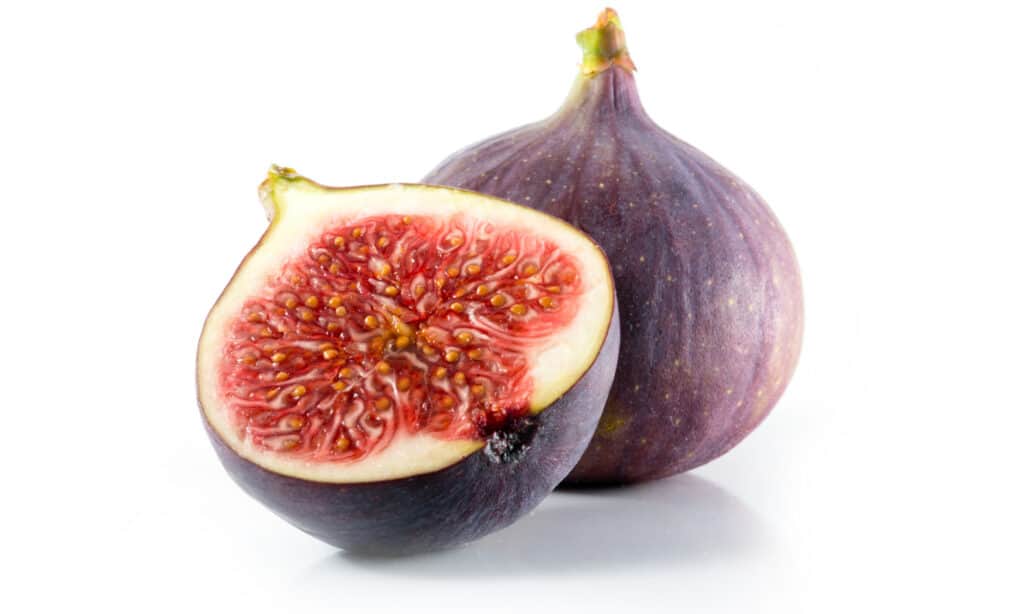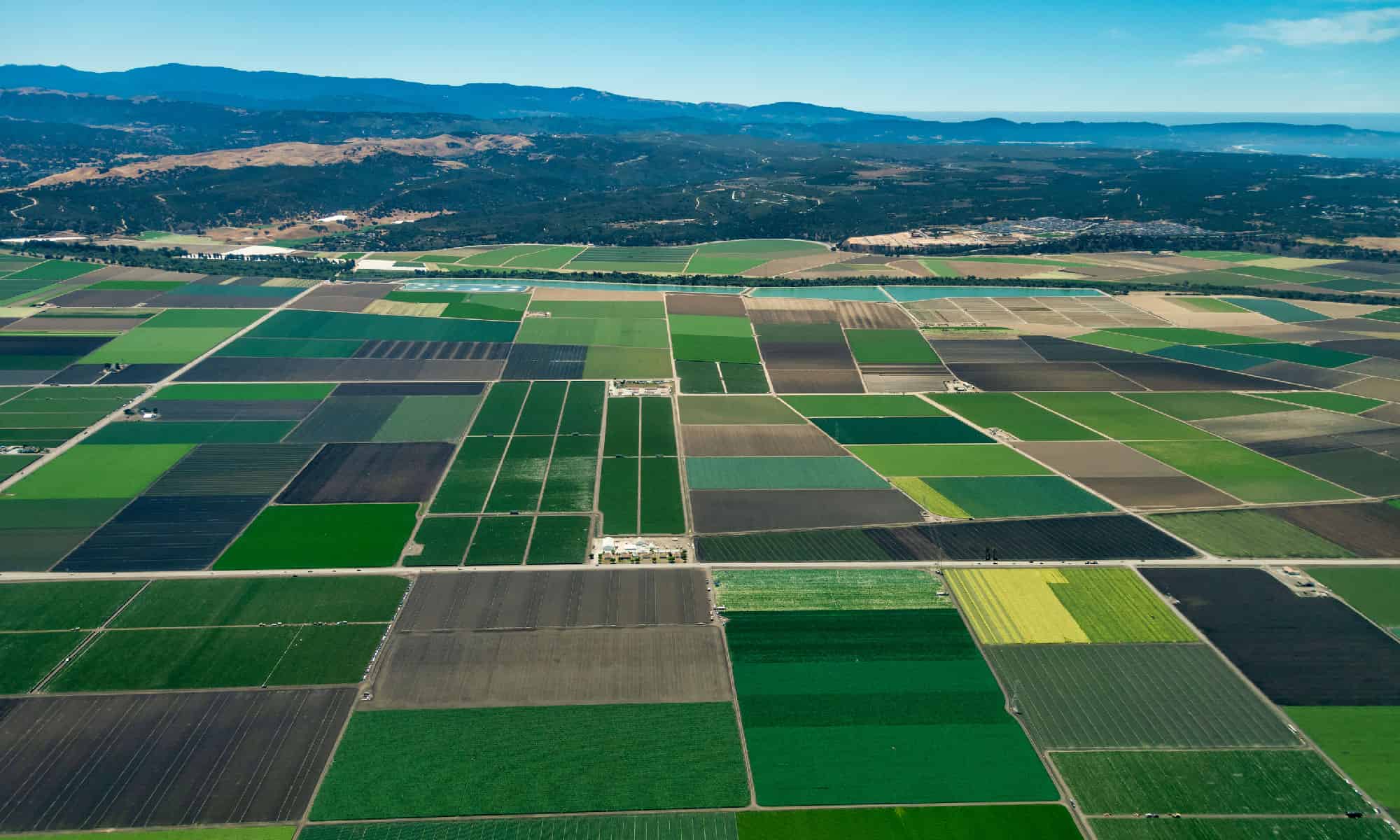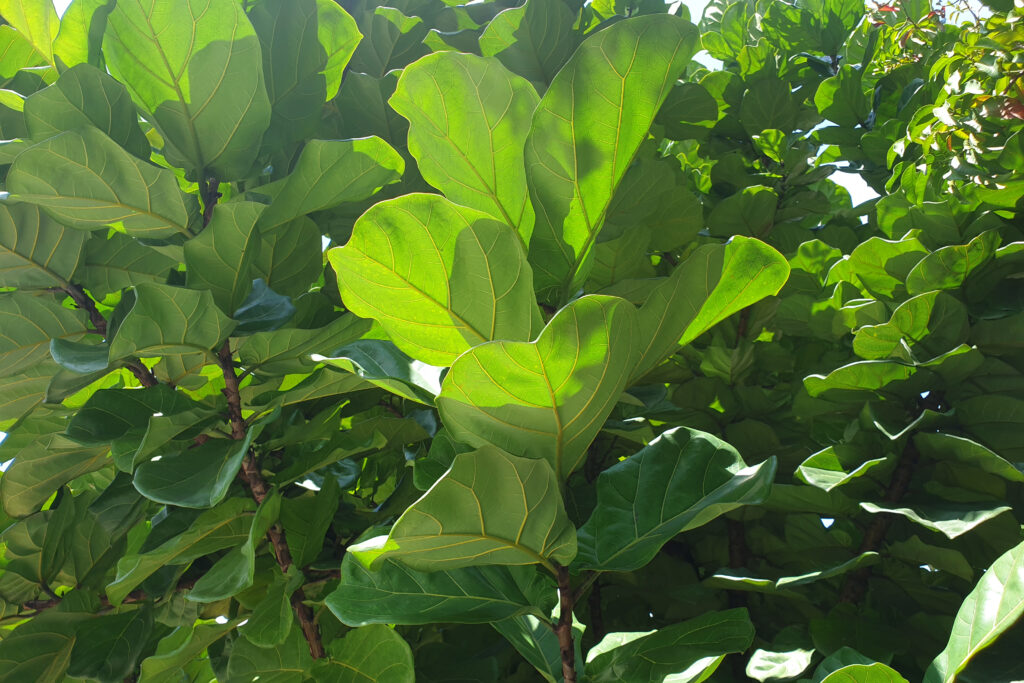You’ve probably at least once savored a fig, that lusciously sweet fruit with a rich, deep history. But when exactly do these wonders of nature burst into their prime in the United States? It’s a curious dance of geography, seasons, and a bit of serendipity! The answer will illuminate the perfect moment to indulge in your fig-tastic fantasies. To truly understand when figs reach their flavor peak, we’ll journey through the variances of fig seasons in different regions, from California’s sun-soaked groves to Florida’s lush greenery.
Ready for a tasty adventure? Let’s explore the fig’s delectable dance with the seasons and learn the best times to sink your teeth into these juicy gems.
What are Figs?
The fig, an ancient fruit steeped in mystery and revered for its exquisite flavor, continues to captivate taste buds across the globe.
Classification
From a botanical standpoint, the fig finds its place within the Moraceae family and is bestowed the scientific name Ficus carica, earning its rank in the Ficus genus. Within this diverse genus, numerous species exist, but none hold as much prominence as the common fig. This classification distinguishes the fig as a fruit with distinct characteristics and a unique botanical heritage.
Appearance
Aesthetically pleasing, figs present themselves as small to medium-sized wonders of nature. Their enchanting shape is reminiscent of a voluptuous bulb, while their skin boasts a tender and delicate texture. The hues of their skin vary across a spectrum of colors, from opulent purples and blacks to verdant greens and radiant golds. Within the fig’s tender flesh, minuscule seeds nestle, offering a subtle crunch when encountered.
Taste and Texture
The fig’s flavor is a revelation to the taste buds, blending saccharine sweetness with a gentle tang. When perfectly ripened, figs reveal their succulence, tenderly yielding with each bite. Their flesh is luxuriously delicate, seeming to dissolve upon the tongue. The symphony of taste that unfolds is akin to a delicate fusion of honeyed nectar, hints of caramel, and ethereal floral undertones. Truly, the fig is a fruit that inspires gastronomic enchantment!
Origin
Shrouded in antiquity, the fig traces its origins to the cradle of civilization, the fertile lands of the Mediterranean. The fruit enjoyed a lofty status in the annals of ancient cultures, most notably among the Greeks and Romans. Cherished for their extraordinary taste and versatility, figs were savored fresh and dried, ensuring a year-round supply of this esteemed fruit. Through time, fig cultivation disseminated across continents, finding a home in Asia, Africa, and the Americas.
Benefits
Beyond its gustatory pleasures, the fig holds a plethora of health benefits. A veritable source of dietary fiber, figs foster digestive wellness and facilitate a flourishing gut. Moreover, these fruits boast a profusion of vital vitamins and minerals, including potassium, calcium, and magnesium. These essential nutrients contribute to the maintenance of cardiac health, fortify bones, and fortify overall vitality. The fig also possesses potent antioxidants, fortifying the body against the perils of free radicals.

Figs have a ton of health benefits, from improving gut health to cardiac health.
©iStock.com/ori-ori
Culinary Uses of Figs
Figs add an enchanting touch to appetizers and salads, creating a harmonious balance of flavors and textures. Sliced figs can be paired with creamy cheeses like goat cheese or feta, creating a delightful contrast between the sweet and tangy notes. For a refreshing twist, figs can be incorporated into vibrant salads, combining their earthy sweetness with bitter greens, citrusy dressings, and crunchy nuts. Their natural caramelization when roasted adds an alluring depth to any dish.
Main Courses
Figs can transform ordinary main courses into extraordinary culinary experiences. Their sweet and savory character complements both meat and vegetarian dishes with equal finesse. Roasted figs can be paired with succulent roasted pork tenderloin, enhancing the richness of the meat with their natural sweetness. In vegetarian cuisine, figs can be stuffed with a variety of ingredients such as nuts, spices, and grains, offering a wholesome and satisfying alternative.
Baked Goods and Desserts
Fig-infused baked goods and desserts tantalize the taste buds, creating a symphony of flavors that satisfy the sweet tooth. From traditional fig cakes to modern tarts and pastries, figs bring a unique and indulgent touch to these treats. Their velvety texture lends itself beautifully to jam and compote fillings, while their natural sugars caramelize to perfection when baked, imparting a heavenly aroma.
Preserves and Accompaniments
Figs lend themselves exceptionally well to the art of preserving, allowing their deliciousness to be enjoyed year-round. Fig preserves, chutneys, and jams offer a burst of concentrated flavor, ideal for spreading on crusty bread or pairing with cheese. These accompaniments also serve as versatile additions to charcuterie boards, adding a touch of elegance to any gathering.
Beverages
Fig-inspired beverages showcase the versatility of this humble fruit in the liquid realm. Fresh figs can be muddled and added to cocktails, creating complex and refreshing concoctions. Fig-infused liqueurs and syrups add depth to both alcoholic and non-alcoholic beverages, amplifying their overall appeal. For a soothing and comforting drink, figs can be steeped in hot water, releasing their essence to create a fragrant tea.
Ancient Roots and Modern Innovation
Throughout history, figs have been revered for their culinary and medicinal properties. With their origins tracing back to ancient times, figs have been incorporated into diverse cuisines around the world. Today, chefs and home cooks continue to harness the potential of figs, pushing culinary boundaries and exploring new flavor combinations. From gourmet restaurants to home kitchens, figs remain a cherished ingredient that never fails to delight the senses.
When are Figs in Season Across the United States?
Figs are in season at various times of the year, depending on the general location where they are planted in the U.S.
Southwest
Figs are in peak season in the Southwest’s sun-drenched region from late summer to early fall, usually from August to September. Warm temperatures and dry climates make states like Arizona, New Mexico, and Texas the perfect places to grow figs. Farmers in the area harvest an abundance of figs around this period, giving residents and tourists the chance to enjoy the delicious flavor of the fruit.
Midwest
Figs mature a little later in the year as you move north to the Midwest, where the environment is often colder and more temperate. Figs typically ripen and are in peak season from late summer to early autumn, usually from September to October, in places like Illinois, Indiana, and Ohio. Because of the slower maturing process made possible by the colder temperatures, figs have a somewhat distinct flavor profile that is often regarded as being more delicate and nuanced.
Pacific Northwest
Figs have a significantly shorter peak season while traveling west to the gorgeous Pacific Northwest, where the climate is cool and the scenery is rich. Figs thrive from late summer to early fall, usually from August to September, because of the cooler environment and increased rainfall in places like Washington and Oregon. The short growing season makes figs’ advent in this area much more anticipated because they are transient yet oh-so-delicious.

Farmland in Northern and Central California is the top producer of figs in the United States.
©Dreamframer/Shutterstock.com
Northeast
Figs have a shorter peak season in the Northeastern region of the country than they do in the Southwest. From late summer to early fall, often in September, figs are at their peak in states like New York, Massachusetts, and Pennsylvania. The pleasant summers and temperate autumns of the area are ideal for fig trees to flourish and provide delicious fruits that are avidly sought after by both residents and chefs.
Southeast
Due to the warm, humid environment of the region, there is a longer fig peak season in the sunny Southeastern states. Typically from August through October, late summer to early fall is when figs are in abundance in states like Florida, Georgia, and Alabama. The figs are at their tastiest and juiciest at this season due to the mild temperatures and abundant sunshine, making them a hallmark of the regional culinary scene.
When to Plant Figs from Seeds in the United States
Across the United States, a patchwork of climates unveils itself, each with its own rules for fig seed planting. From the sun-soaked coastlines to the rugged mountains and sprawling plains, the diverse landscapes demand careful consideration.
Southern Region
In the southern states, where the sun reigns supreme and the growing season stretches its arms wide, early spring emerges as the prime moment to sow fig seeds. By embracing the mild temperatures and capitalizing on the forthcoming warmth, the seeds have ample time to establish themselves before the sweltering summer heat sets in.
Northern Region
Venturing northward, where winter’s icy grip lingers, the planting timetable shifts accordingly. It is wise to bide one’s time until the threat of frost has dissipated, waiting for the soil to awaken from its slumber. Late spring or early summer becomes the designated period to sow fig seeds, harnessing the nurturing power of the approaching summer.
Nevertheless, the tapestry of intricacies woven by microclimates within these broader regions must not be overlooked. Subtle deviations can sway the optimal planting time, demanding the keen eye of the gardener and a touch of intuition to navigate this intricate puzzle.
Is There Anywhere in the U.S. Where Figs Can’t Grow?
Fig trees face challenges in regions with extremely cold temperatures and short growing seasons, hindering their ability to flourish and bear fruit. Northernmost states, like Alaska, parts of Minnesota, and North Dakota, endure harsh, extended freezing periods that prove detrimental to fig trees’ survival. The intense coldness disrupts their growth and fruit production. Moreover, areas with high humidity and excessive rainfall, such as portions of the Pacific Northwest and certain coastal regions, present additional obstacles to fig cultivation.
These environments foster moisture-related issues like fungal diseases and root rot, undermining the health and productivity of fig trees. Nonetheless, innovative methods like container gardening and winter protection measures can expand the possibilities of growing figs in less-than-ideal climates.
Tips for Growing Figs at Home
Growing figs at home can be a rewarding and enjoyable experience. With a few simple tips, you can successfully cultivate these delicious fruits right in your backyard. Whether you’re a seasoned gardener or a beginner, here are some valuable guidelines to help you grow figs like a pro.

It’s worth noting that fig trees rarely fruit indoors but can fruit outside in the right conditions.
©TY Lim/Shutterstock.com
Selecting the Right Variety
When it comes to figs, there are various cultivars to choose from. Opt for varieties that are well-suited to your climate and growing conditions. Some popular types include Black Mission, Brown Turkey, and Celeste figs. Consult local nurseries or agricultural extension offices to determine the best variety for your region.
Choosing the Ideal Location
Fig trees thrive in full sunlight, so it’s crucial to select a location in your garden that receives at least six to eight hours of direct sunlight each day. Ensure that the area has well-draining soil to prevent waterlogged roots, which can lead to root rot. Avoid planting near large trees or structures that may shade the fig tree.
Soil Preparation
Before planting, prepare the soil by incorporating organic matter such as compost or aged manure. This will improve soil fertility and drainage. Fig trees can tolerate a wide range of soil pH levels, but a slightly acidic to neutral pH (around 6.0-7.0) is generally recommended.
Planting Techniques
Dig a hole that is wide and deep enough to completely cover the root ball of the fig tree. Gently remove the tree from its container and place it in the hole, ensuring that the top of the root ball is level with or slightly above the surrounding soil. Fill the hole back up with soil and press it down gently. Water the tree thoroughly after planting to settle the soil.
Watering and Mulching
Figs have moderate water needs. Water your fig tree deeply but not too often. Allow the plant’s soil to dry out a bit between watering sessions. Try applying a layer of rich, organic mulch around the base of the fig tree. This helps maintain soil moisture and to keep weeds away. Keep the mulch a few inches away from the trunk to prevent rot.
Pruning and Training
Prune fig trees during the dormant season to remove dead or damaged branches. Also, shape the tree and encourage airflow. Figs can be trained into a single-trunk or multi-trunk form, depending on your preference. Pruning is essential to maintain the tree’s size and shape, as well as to promote better fruit production.
Fertilizing
Figs don’t always need fertilizer as long as their soil is healthy. However, applying a balanced fertilizer in early spring can benefit the tree’s growth and fruiting. Follow the package instructions for the appropriate dosage based on the size and age of the tree. Over-fertilization can lead to excessive vegetative growth at the expense of fruit production.
Pest and Disease Management
Figs are relatively pest and disease resistant, but they can occasionally face challenges. Monitor your trees regularly for common pests like aphids, scales, and mealybugs. If necessary, use organic insecticidal soaps or horticultural oils to control infestations. Fungal diseases such as leaf spot and root rot can be prevented by providing proper air circulation and avoiding overwatering.
Harvesting Ripe Figs
Knowing when to harvest your figs is crucial to ensure optimal flavor and sweetness. Figs are ready to be picked when they are soft to the touch, have a slight droop, and have a rich color. Harvest the fruits gently to avoid bruising or damaging them. Enjoy them fresh or use them in various culinary preparations.
By following these tips, you can successfully grow figs at home and relish the delightful taste of homegrown fruits. Remember, patience and consistent care are key to achieving a bountiful harvest. And if you don’t feel like growing them at home, you can always wait until fig peak season to go pick or purchase your own. Happy planting!
Thank you for reading! Have some feedback for us? Contact the AZ Animals editorial team.








